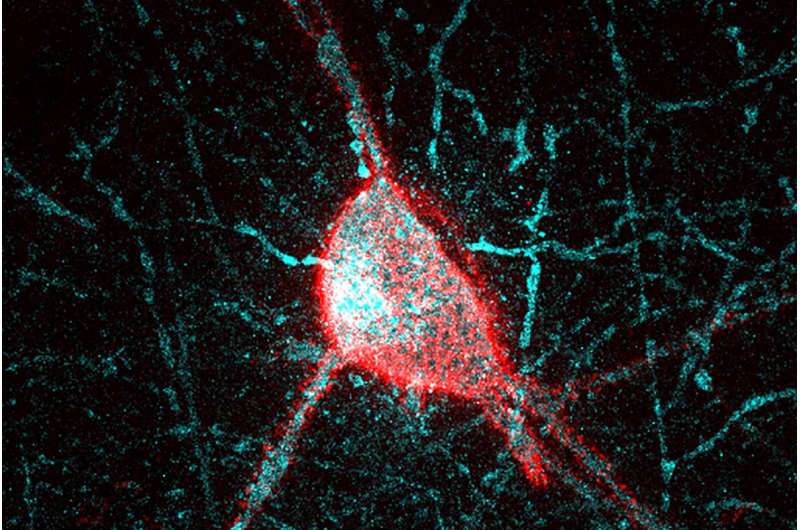This article has been reviewed according to Science X's editorial process and policies. Editors have highlighted the following attributes while ensuring the content's credibility:
fact-checked
trusted source
proofread
Study first to examine how early memory changes as we age at a cellular level

How do our brains become capable of creating specific memories? In one of the first preclinical studies to examine memory development in youth, a research team at The Hospital for Sick Children (SickKids) may have identified a molecular cause for memory changes in early childhood.
Event-based memories, also known as episodic memories, are what people traditionally think of when they hear the word memory: a recollection tied to a specific context. For young children, however, memory is more general or "gist"-like, and these general recollections are typically not tied to a specific context.
In a study published in Science led by Drs. Paul Frankland and Sheena Josselyn, both Senior Scientists in the Neurosciences & Mental Health program at SickKids, the researchers pinpoint the molecular mechanisms underlying the change from gist-like to episodic memory in mice. The team notes that understanding this change, which generally occurs between four and six years old in children, may inform new insights in child development research and conditions which affect the brain, from autism spectrum disorder to concussion.
"Researchers have studied how episodic memory develops for decades, but thanks to the development of precise cellular interventions we were now able to examine this question at the molecular level for the very first time," says Frankland, who also holds a Canada Research Chair in Cognitive Neurobiology.
Growth of perineuronal net may trigger change in memory
In adults, memory traces (also known as engrams) are made up of 10 to 20 percent of neurons, but the overall size of these engrams is doubled in young children, with 20 to 40 percent of neurons making up an engram supporting a memory.
So why the change? The hippocampus, a part of the brain responsible for learning and memory, contains a variety of neurons including a type of inhibitory cell called a parvalbumin-expressing (PV) interneuron. These inhibitory cells constrain the size of the engram and enable memory specificity. The research team identified that as these interneurons mature, memory transitions from general to more specific and engrams are formed at the appropriate size.
Using viral gene transfer technology developed by Dr. Alexander Dityatev, head of the Molecular Neuroplasticity research group at the German Center for Neurodegenerative Diseases, the researchers decided to delve deeper and explore the reason for this change. They found that as a dense extracellular matrix, known as the perineuronal net, develops around these interneurons in the hippocampus, the interneurons mature, shifting the way our brain creates engrams and stores memories.
"Once we identified the perineuronal net as a key factor in interneuron maturation, we were able to accelerate the net's development and create specific episodic, rather than general, memories in juvenile mice," says Josselyn, who holds a Canada Research Chair in Circuit Basis of Memory.
Informing new insights into brain function and cognition
While the team was able to trigger this change in memory type by accelerating the development of the perineuronal net, they also note that the reasons for the age difference between gist-like and episodic memories should not be overlooked.
"When you think about what purpose memory serves, it makes sense that a child's memory would function differently from an adult," explains Adam Ramsaran, a Ph.D. candidate in the Frankland Lab and first author on the study. "At three years old, you don't need to remember the specifics. A gist-like memory helps children build a large knowledge base which can get more specific as they grow older and have more experiences."
Building on these molecular discoveries, the research team sped up the growth of the perineuronal net by providing an enriched environment to allow the formation of specific memories, a finding which is helping to inform child development research underway at SickKids and the University of Toronto.
"Outside of memory development, we also found similar maturation-type mechanisms involved in different sensory systems of the brain," says Frankland. "The same brain mechanism may be used by several different brain regions for several different purposes, which presents exciting new opportunities for research and collaboration."
More information: Adam I. Ramsaran et al, A shift in the mechanisms controlling hippocampal engram formation during brain maturation, Science (2023). DOI: 10.1126/science.ade6530



















